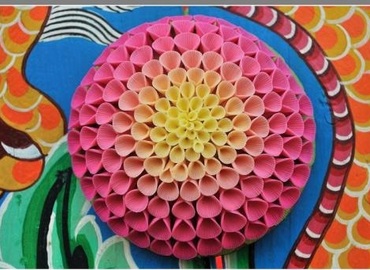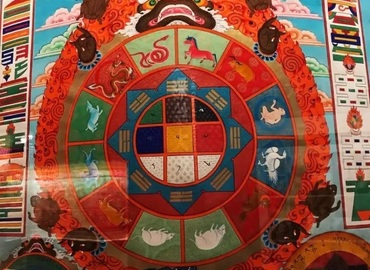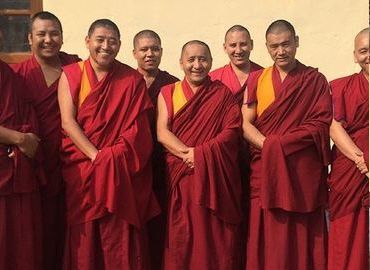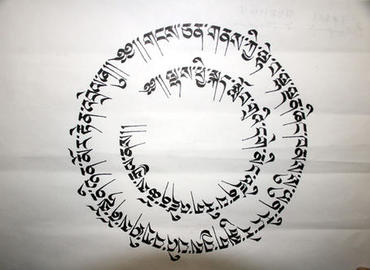Tibetan Sound Bowls
- Catherine
- Last Updated : 12/19/2025
There are many sacred vessels in different shapes in Tibetan Buddhism, one of which is called the Tibetan sound bowl, also known as the Himalayan singing bowls. It originated in ancient India more than 1,200 years ago. The ancients collected ore from the Himalayas, refined it into copper, and then made it into such a vessel. There are different types of bowls, some of which are used to beg for food; some of which are used to present the tonality for chanting at praying ceremonies; and some of which are used to record merits. For example, when you go to the temple to worship Buddha, the monk would tap the big bowl for showing that the Buddha has already received your prayer and recorded the merit.
The Functions Of Tibetan Sound Bowls
The main use of bowls for a monk is to serve food. In India, Nepal, Thailand, and other countries, monks use metal bowls. In addition to being an instrument of religious ritual, the music bowl is also widely used in daily life. Many families in the Himalayan mountains use bowls as their daily food utensils. In the local custom, bowls of warm food can be given to pregnant women who have just given birth. Ayurveda in India believes that bowls can promote rehabilitation and recovery. In the past, since there was no electricity or refrigerator, people put extra food in the bowl to seal for better keeping. So its original function is also equivalent to refrigerators.
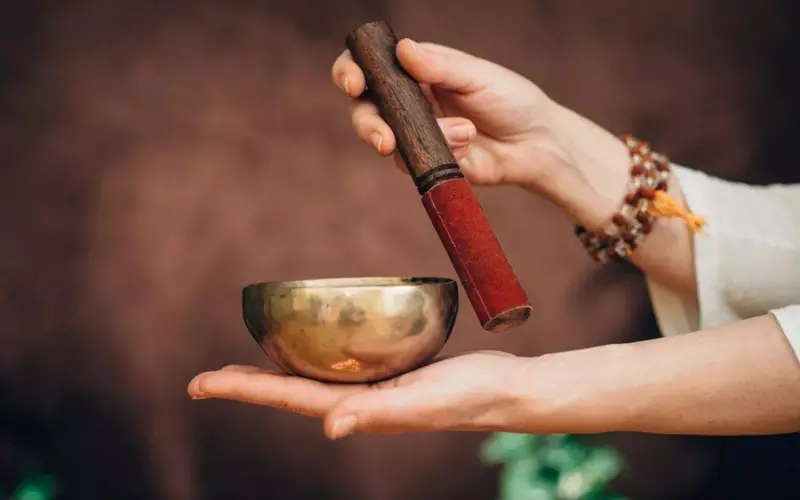
How To Use Singing Bowls
The bowl, as a musical instrument, consists of a copper bowl and a hand-made peach wood handle. The basic method of use: first, stretch out the left hand, and put the bowl on the palm. Hold the wood handle in the right hand, then, gently wipe the edge of the bowl with the lower end of the handle. Slowly wipe around the side of the bowl in the clockwise direction, the slight vibration caused by the wooden handle rubbing the side of the bowl makes a pleasant and resonant sound.
Besides, the singing bowls can be traditionally grouped into eight categories of Chinese musical instruments, known as bayin(八音). The eight categories are silk, bamboo, wood, stone, metal, clay, gourd, and skin. There are eight-step notes in the bowl melody, and small octave, large octave, as well as succussion sound, melody tone, stepped tone, and so on. The beautiful ensemble is ethereal, far-reaching, and endlessly, which sounds like music for Buddha, Buddha's music bowl hence named. This bowl is mostly used by people when they are meditating, which can make them feel quiet, peaceful, and inspired.
In Nepal and Tibet, this musical instrument that has been inherited for thousands of years is also used for yoga meditation and psychotherapy. Because of the deep and long clang of the singing bowl, it seems that as long as the person who holds the bowl knocks, it can make people enter a state of physical and mental relaxation. Therefore, it is also called Singing Bowl Healing or Sound Bowls Healing. This kind of sound healing uses different sounds and vibration frequencies to make people enter a deep meditation or relaxation state, which has a certain therapeutic effect.
In addition, it also has the effects of refreshing the body and mind, relaxing and creating tranquility, and transforming negative emotions. Its miraculous effects vary from person to person, so different people may have different views. Nowadays, singing bowl healing has been widely used in the treatment of beauty spas and massage health clubs. Many healers put copper bowls on the customers' bodies and find that a 5-minute deep relaxation of the copper bowl massage far exceeds the effect of half an hour of freehand massage. Here's a video of singing bowl music.
How To Select A Tibetan Singing Bowl Of High Quality
First, find a windy place and put the bowl to your ear. If you hear the vibration sound of the wind-blowing bowl, the material of the bowl is truly good.
Second, pick up the bowl handle and hit the external bulge of the bowl harder. If the bowl gets vibrated and emits an ethereal continuant, with lingering sound quality, then it shows that the making craft of the bowl is very exquisite. If the sound is very short or it ends quickly, or the ending is broken, or rough, then it shows the craft of this bowl is really poor.
Email response within 0.5~24 hours.


